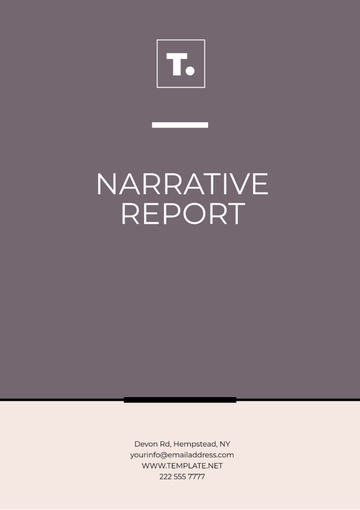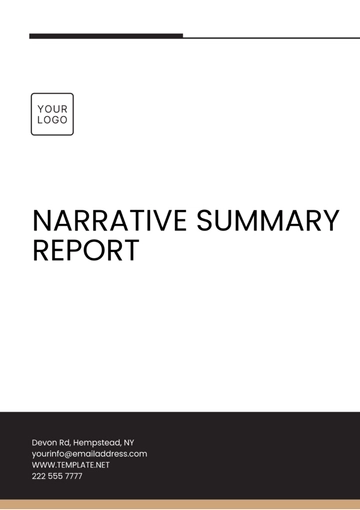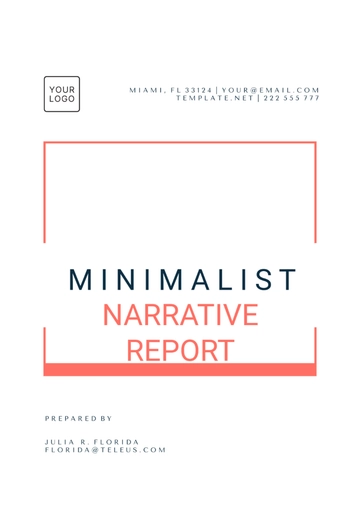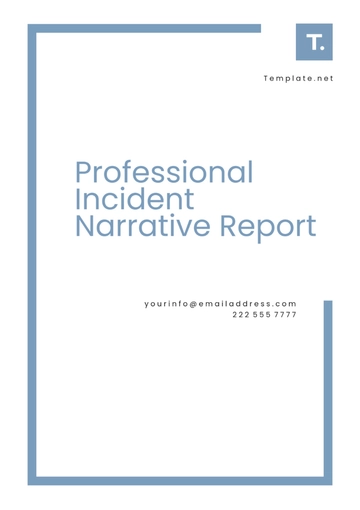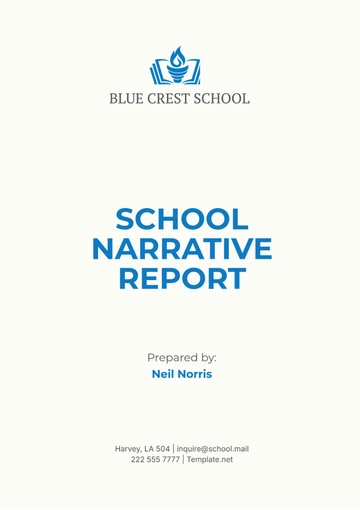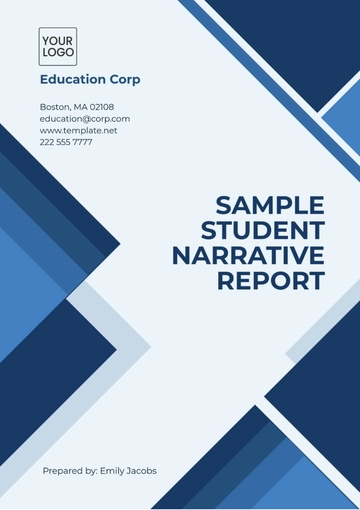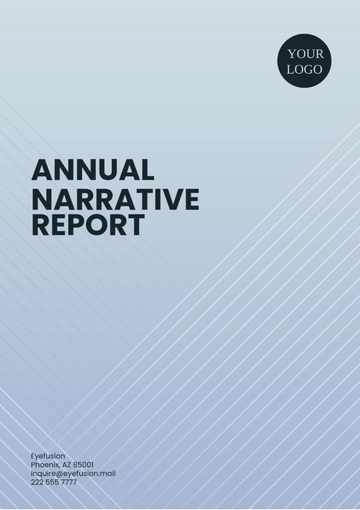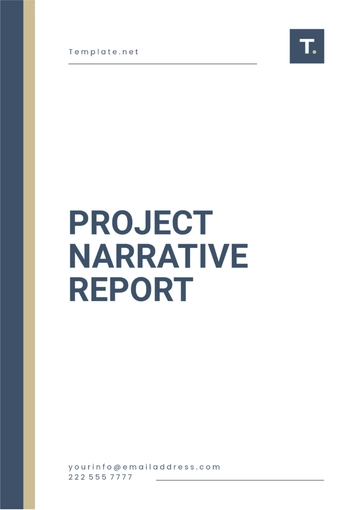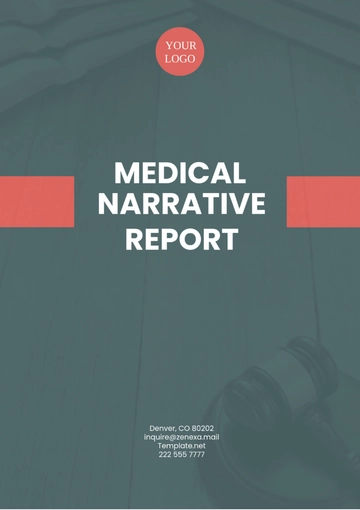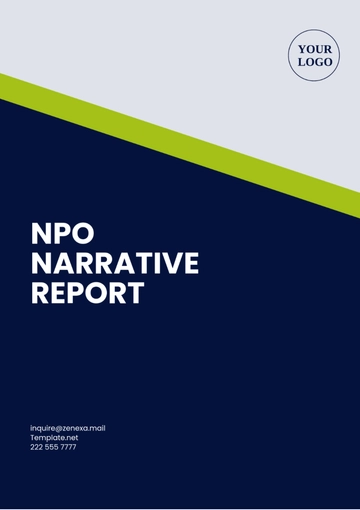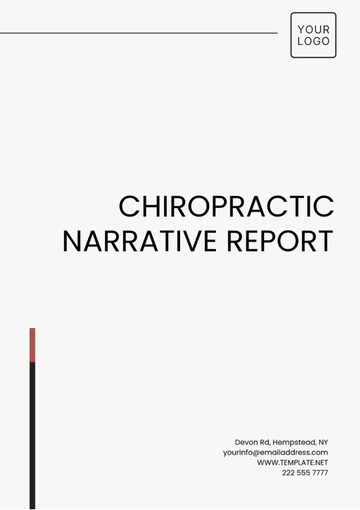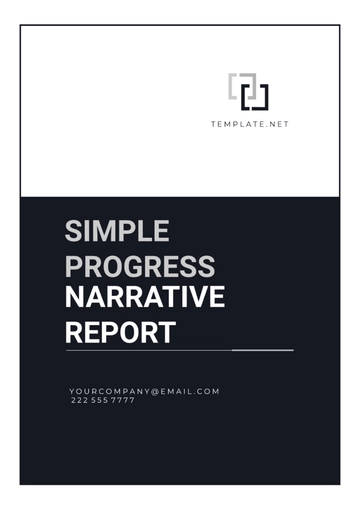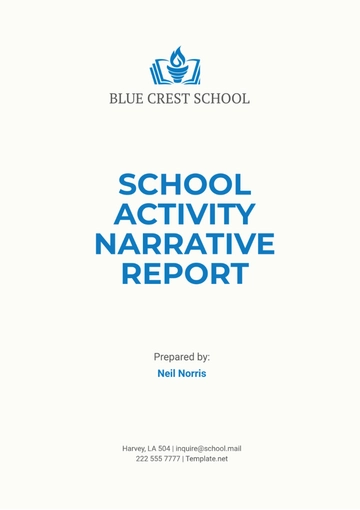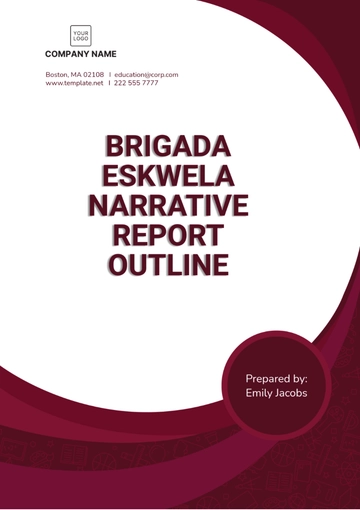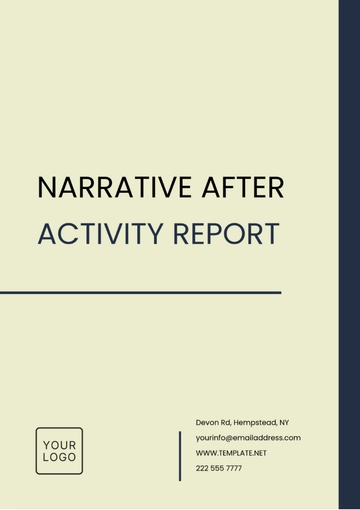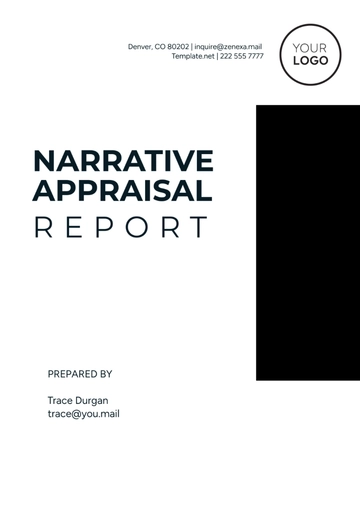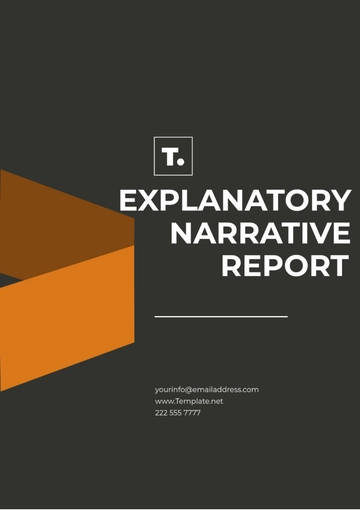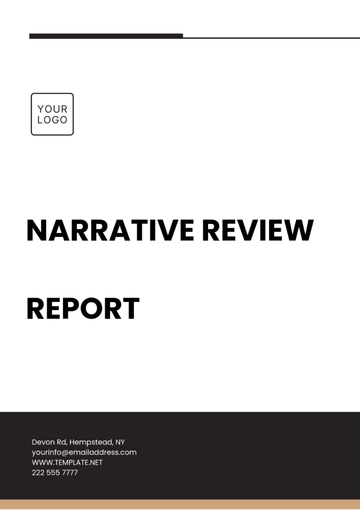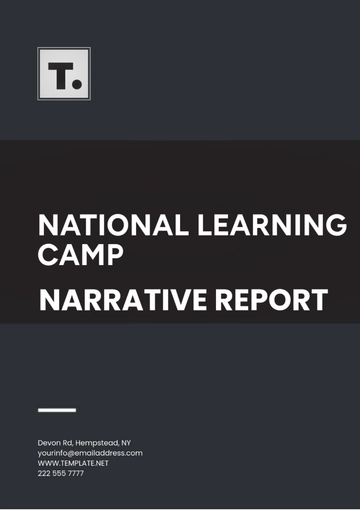Free Aesthetic Church Outreach Report
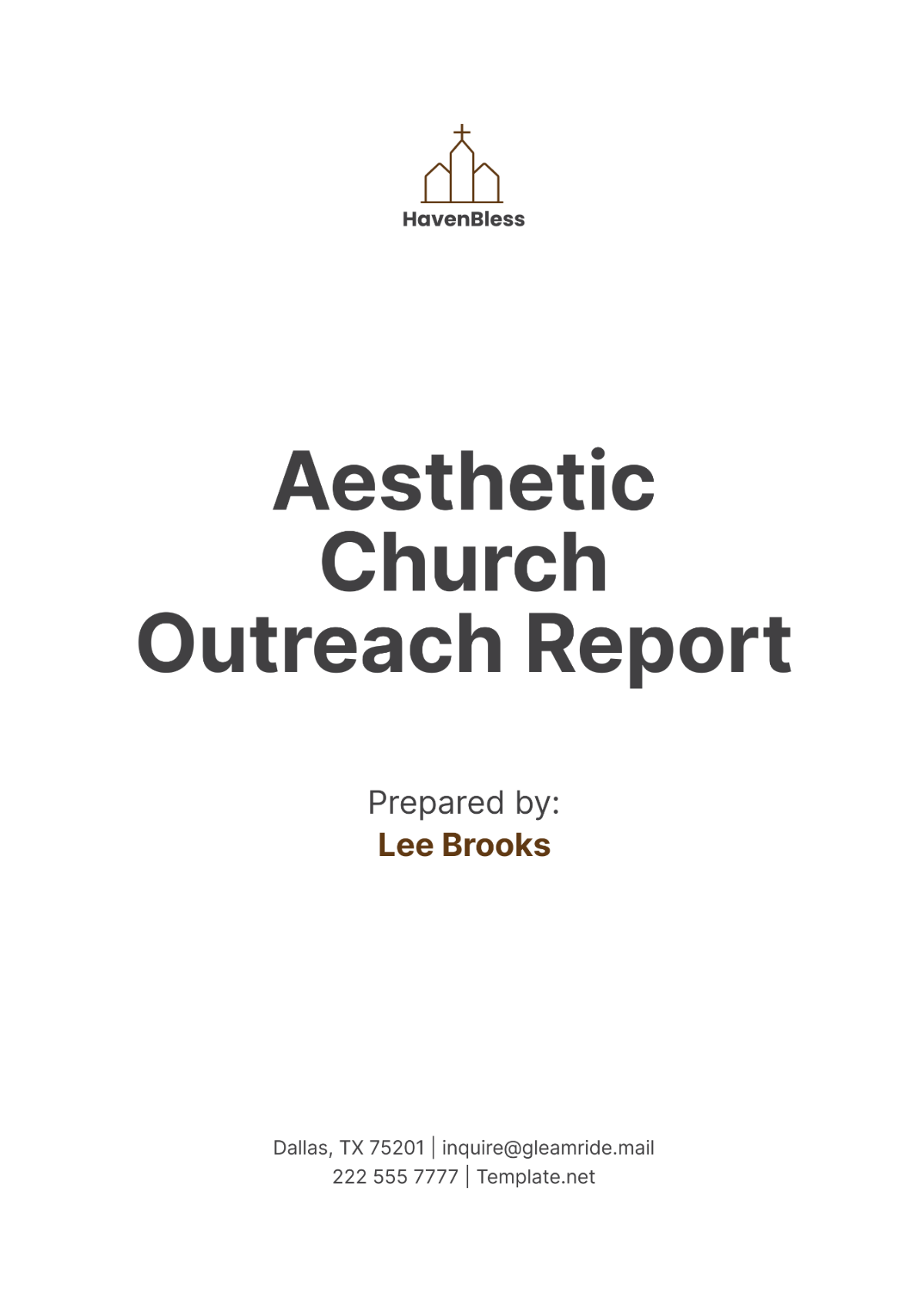
I. Introduction
A. Overview
Community Events: Over the past six months, [Your Company Name] has organized several community events aimed at fostering fellowship and engaging with the local community. These events include food drives, health fairs, and family fun days. This Church Outreach Report will showcase the details and results of these initiatives.
Educational Programs: We have also launched educational programs targeting different age groups within our congregation. These programs include Bible study classes, youth mentorship programs, and financial literacy workshops.
Support Services: Our outreach efforts have extended to providing support services such as counseling and job placement assistance. These services aim to support the holistic well-being of our community members.
B. Objectives
Spiritual Growth: One of our primary objectives is to promote spiritual growth among our congregation and the broader community. We achieve this through regular worship services, prayer meetings, and Bible study groups.
Community Engagement: We aim to engage with the local community by addressing their needs and building strong, supportive relationships. This includes hosting community events and providing essential services.
Holistic Support: Our outreach initiatives focus on providing holistic support to individuals and families. This involves offering educational programs, counseling, and practical assistance to improve their quality of life.
II. Community Events
A. Food Drives
The following table outlines the details of the food drives conducted during the reporting period:
Date | Location | Number of Participants | Food Items Collected (lbs) |
|---|---|---|---|
02/15/2050 | Community Park | 150 | 1,200 |
04/10/2050 | Church Grounds | 200 | 1,500 |
06/05/2050 | Downtown Area | 180 | 1,300 |
Total | 530 | 4,000 |
Date and Location: The food drives were held on February 15th at Community Park, April 10th at Church Grounds, and June 5th in the Downtown Area. These locations were chosen to maximize accessibility for community members.
Number of Participants: Participation was robust, with 150, 200, and 180 attendees at the respective events. This high turnout indicates strong community interest and involvement in our outreach efforts.
Food Items Collected: A total of 4,000 lbs of food items were collected across the three events. The generous donations will significantly aid in supporting local families in need.
The food drives have been successful in mobilizing the community to support those in need. These events not only provide essential resources but also foster a spirit of unity and compassion among participants.
B. Health Fairs
The following table provides an overview of the health fairs organized during the reporting period:
Date | Location | Services Provided | Number of Attendees |
|---|---|---|---|
03/20/2050 | Community Center | Free Health Screenings | 220 |
05/25/2050 | School Gymnasium | Wellness Workshops, Vaccines | 250 |
Total | 470 |
Date and Location: Health fairs were conducted on March 20th at the Community Center and May 25th at the School Gymnasium. These venues were selected to provide ample space and accessibility for attendees.
Services Provided: The health fairs offered a variety of services including free health screenings, wellness workshops, and vaccinations. These services were aimed at improving the health and well-being of our community members.
Number of Attendees: The events saw a substantial turnout, with 220 attendees in March and 250 in May. The high participation rate reflects the community's interest in and need for accessible health services.
The health fairs have played a crucial role in promoting health awareness and providing essential medical services to the community. By addressing health needs, we are contributing to the overall well-being of our community members.
III. Educational Programs
A. Bible Study Classes
The following table outlines the details of the Bible study classes conducted during the reporting period:
Frequency | Age Group | Number of Participants | Topics Covered |
|---|---|---|---|
Weekly | Adults | 50 | New Testament Studies |
Weekly | Youth | 30 | Old Testament Stories |
Bi-weekly | Children | 40 | Biblical Parables |
Total | 120 |
Frequency and Age Group: Bible study classes were held weekly for adults and youth, and bi-weekly for children. This schedule was designed to accommodate different age groups and ensure regular engagement.
Number of Participants: Participation was strong, with 50 adults, 30 youth, and 40 children attending the classes. This indicates a high level of interest in deepening biblical knowledge across all age groups.
Topics Covered: The classes covered a range of topics, including New Testament studies for adults, Old Testament stories for youth, and biblical parables for children. These topics were chosen to provide a comprehensive understanding of the Bible.
The Bible study classes have been effective in promoting spiritual growth and biblical literacy among participants. These sessions provide a platform for learning, discussion, and personal reflection on faith.
B. Youth Mentorship Programs
The following table provides an overview of the youth mentorship programs conducted during the reporting period:
Frequency | Number of Mentors | Number of Mentees | Activities and Workshops |
|---|---|---|---|
Bi-weekly | 15 | 30 | Career Guidance, Skill Development |
Frequency and Number of Mentors: The youth mentorship programs were held bi-weekly with the participation of 15 mentors. These mentors volunteered their time and expertise to support the youth.
Number of Mentees: The program saw 30 mentees participating, benefiting from personalized guidance and support. This engagement highlights the program's relevance and impact.
Activities and Workshops: The program included activities and workshops on career guidance and skill development. These sessions aimed to equip the youth with valuable skills and knowledge for their future.
The youth mentorship programs have been instrumental in providing guidance and support to young members of our community. By offering mentorship, we are helping to shape the future leaders and contributors to society.
IV. Support Services
A. Counseling
The following table outlines the details of the counseling services provided during the reporting period:
Date | Type of Counseling | Number of Sessions | Number of Clients |
|---|---|---|---|
January-June | Individual and Family | 60 | 40 |
Date and Type of Counseling: Counseling services were offered from January to June, including both individual and family sessions. This range of services ensures that we address diverse needs within our community.
Number of Sessions: A total of 60 sessions were conducted, providing ample opportunities for clients to receive support and guidance.
Number of Clients: 40 clients benefited from the counseling services, highlighting the community's need for and trust in our support services.
The counseling services have provided essential emotional and psychological support to our community members. These sessions help individuals and families navigate personal challenges and improve their well-being.
B. Job Placement Assistance
The following table provides an overview of the job placement assistance services provided during the reporting period:
Frequency | Number of Workshops | Number of Participants | Jobs Secured |
|---|---|---|---|
Monthly | 6 | 35 | 12 |
Frequency and Number of Workshops: Job placement workshops were conducted monthly, totaling 6 workshops over the reporting period. These workshops provided practical support for job seekers.
Number of Participants: 35 participants attended the workshops, seeking assistance in finding employment. This reflects a significant need for job placement support within our community.
Jobs Secured: As a result of the workshops, 12 participants successfully secured jobs. This demonstrates the effectiveness of our job placement assistance services.
The job placement assistance services have been crucial in helping community members find employment. By providing support and resources, we are helping individuals achieve financial stability and personal growth.
V. Outreach Impact
A. Participant Feedback
The following chart and table outline the feedback received from participants of our outreach programs:
Program | Positive Feedback | Suggestions for Improvement |
|---|---|---|
Community Events | 85% | 15% |
Educational Programs | 90% | 10% |
Support Services | 88% | 12% |
Total | 87.67% | 12.33% |
Community Events: 85% of participants provided positive feedback on our community events, appreciating the efforts to engage and support the community. 15% suggested improvements, such as better event coordination and increased volunteer involvement.
Educational Programs: 90% of participants gave positive feedback on our educational programs, highlighting the quality of content and the value of the sessions. 10% suggested improvements, including more interactive activities and extended program durations.
Support Services: 88% of participants expressed satisfaction with our support services, noting the professionalism and compassion of our staff. 12% suggested improvements, such as more frequent sessions and additional types of support.
The participant feedback indicates a high level of satisfaction with our outreach programs. The suggestions for improvement provide valuable insights for enhancing our services and better meeting the needs of our community.
B. Community Impact Metrics
The following table provides an overview of key community impact metrics for our outreach programs:
Metric | January | June |
|---|---|---|
Community Engagement | 65% | 80% |
Volunteer Participation | 50 | 70 |
Service Utilization | 55% | 75% |
Community Engagement: Community engagement increased from 65% in January to 80% in June, reflecting the success of our outreach efforts in fostering a sense of community and involvement.
Volunteer Participation: Volunteer participation rose from 50 to 70, demonstrating increased interest and commitment from community members in supporting our outreach activities.
Service Utilization: Utilization of our services grew from 55% to 75%, indicating that more community members are benefiting from the support and resources we provide.
The increase in these metrics shows the significant positive impact our outreach efforts have had on the community. By engaging more people and providing valuable services, we are enhancing the overall well-being of our community.
VI. Financial Summary
A. Budget Overview
The following chart and table outline the budget for our outreach programs during the reporting period:
Program | Budget Allocated | Budget Utilized |
|---|---|---|
Community Events | $15,000 | $14,500 |
Educational Programs | $10,000 | $9,500 |
Support Services | $12,000 | $11,000 |
Total | $37,000 | $35,000 |
Community Events: A budget of $15,000 was allocated for community events, with $14,500 utilized. This indicates effective budget management, with only a small portion of the budget remaining unused.
Educational Programs: Educational programs were allocated $10,000, of which $9,500 was utilized. This efficient use of funds ensured the successful implementation of our educational initiatives.
Support Services: A budget of $12,000 was allocated for support services, with $11,000 utilized. This reflects our commitment to providing essential services to the community within the allocated budget.
The budget overview demonstrates our ability to effectively allocate and utilize funds to support our outreach programs. This financial efficiency ensures that we can continue to offer valuable services to the community.
B. Funding Sources
The following chart and table provide the overview of the funding sources for our outreach programs:
Funding Source | Amount |
|---|---|
Donations | $20,000 |
Grants | $10,000 |
Fundraising Events | $7,500 |
Total | $37,500 |
Donations: Donations contributed $20,000 to our outreach programs, reflecting strong support from our congregation and community members.
Grants: Grants provided $10,000 in funding, demonstrating our ability to secure external support for our initiatives.
Fundraising Events: Fundraising events generated $7,500, showcasing the community's involvement and commitment to supporting our outreach efforts.
The diverse funding sources ensure the sustainability of our outreach programs. By securing donations, grants, and funds from events, we can continue to provide essential services to the community.
VII. Challenges and Solutions
A. Challenges
The following table outlines the main challenges encountered during our outreach efforts:
Challenge | Description |
|---|---|
Volunteer Shortage | Difficulty in recruiting enough volunteers |
Funding Constraints | Limited budget for expanding programs |
Participant Engagement | Ensuring consistent participant engagement |
Volunteer Shortage: One of the main challenges was recruiting enough volunteers to support our outreach activities. This shortage impacted our ability to deliver services efficiently.
Funding Constraints: Limited budget for expanding programs was another significant challenge. This constraint affected our ability to introduce new initiatives and expand existing ones.
Participant Engagement: Ensuring consistent participant engagement was challenging. While initial interest was high, maintaining ongoing participation required continuous effort and innovative approaches.
The challenges faced during our outreach efforts provide valuable lessons for future planning. Addressing these issues will help us enhance the effectiveness of our programs and better serve the community.
B. Solutions
The following table provides an overview of the solutions implemented to address the challenges:
Solution | Description |
|---|---|
Volunteer Recruitment | Implemented targeted recruitment strategies |
Grant Applications | Applied for additional grants |
Engagement Strategies | Introduced new engagement strategies |
Volunteer Recruitment: To address the volunteer shortage, we implemented targeted recruitment strategies. These included outreach to local schools, businesses, and community organizations to attract volunteers.
Grant Applications: To overcome funding constraints, we applied for additional grants. These efforts aimed to secure more financial support for our programs.
Engagement Strategies: To ensure consistent participant engagement, we introduced new engagement strategies. These included interactive activities, personalized follow-ups, and incentives for continued participation.
The solutions implemented have been effective in addressing the challenges encountered. By adopting these strategies, we have improved our outreach efforts and enhanced our ability to serve the community.
VIII. Recommendations
A. Program Expansion
Increase Outreach Events: Expanding the number of outreach events will allow us to engage with more community members and address a wider range of needs. This can include additional health fairs, community clean-up days, and family support workshops.
Develop New Programs: Developing new programs tailored to specific community needs will enhance our impact. This can include mental health support groups, senior citizen activities, and environmental awareness initiatives.
Enhance Collaboration: Collaborating with other local organizations can strengthen our outreach efforts. Partnerships with schools, healthcare providers, and social service agencies will provide additional resources and expertise.
Expanding our programs and enhancing collaboration will enable us to better meet the needs of our community. These recommendations will help us maximize our impact and ensure the sustainability of our outreach efforts.
B. Funding Strategies
Diversify Funding Sources: Diversifying our funding sources will ensure the financial sustainability of our programs. This can include applying for more grants, seeking corporate sponsorships, and increasing fundraising efforts.
Increase Donation Campaigns: Launching targeted donation campaigns will help us raise more funds from our congregation and community. These campaigns can focus on specific needs or projects, encouraging people to contribute.
Optimize Budget Management: Improving budget management practices will ensure efficient use of funds. This can include regular financial reviews, cost-saving measures, and strategic allocation of resources.
Adopting these funding strategies will provide the financial stability needed to expand and enhance our outreach programs. Effective fundraising and budget management are crucial for the long-term success of our initiatives.
IX. Conclusion
The outreach efforts of [Your Company Name] have significantly impacted our community by providing essential services, fostering engagement, and promoting spiritual growth. Through community events, educational programs, and support services, we have addressed various needs and built strong relationships within our community. The positive feedback and increased participation demonstrate the effectiveness of our efforts.
Moving forward, we aim to expand our programs, enhance collaboration, and secure additional funding to sustain and grow our outreach initiatives. By continuing to serve our community with dedication and compassion, we will fulfill our mission and make a lasting difference in the lives of those we serve.
- 100% Customizable, free editor
- Access 1 Million+ Templates, photo’s & graphics
- Download or share as a template
- Click and replace photos, graphics, text, backgrounds
- Resize, crop, AI write & more
- Access advanced editor
Document your church's outreach efforts with ease with the Aesthetic Church Outreach Report Template! Only available here on Template.net, this editable template is made to be conveniently customizable to showcase your church’s community impact. Use the AI Editor Tool to make precise and effective updates to your report! Download now!
You may also like
- Sales Report
- Daily Report
- Project Report
- Business Report
- Weekly Report
- Incident Report
- Annual Report
- Report Layout
- Report Design
- Progress Report
- Marketing Report
- Company Report
- Monthly Report
- Audit Report
- Status Report
- School Report
- Reports Hr
- Management Report
- Project Status Report
- Handover Report
- Health And Safety Report
- Restaurant Report
- Construction Report
- Research Report
- Evaluation Report
- Investigation Report
- Employee Report
- Advertising Report
- Weekly Status Report
- Project Management Report
- Finance Report
- Service Report
- Technical Report
- Meeting Report
- Quarterly Report
- Inspection Report
- Medical Report
- Test Report
- Summary Report
- Inventory Report
- Valuation Report
- Operations Report
- Payroll Report
- Training Report
- Job Report
- Case Report
- Performance Report
- Board Report
- Internal Audit Report
- Student Report
- Monthly Management Report
- Small Business Report
- Accident Report
- Call Center Report
- Activity Report
- IT and Software Report
- Internship Report
- Visit Report
- Product Report
- Book Report
- Property Report
- Recruitment Report
- University Report
- Event Report
- SEO Report
- Conference Report
- Narrative Report
- Nursing Home Report
- Preschool Report
- Call Report
- Customer Report
- Employee Incident Report
- Accomplishment Report
- Social Media Report
- Work From Home Report
- Security Report
- Damage Report
- Quality Report
- Internal Report
- Nurse Report
- Real Estate Report
- Hotel Report
- Equipment Report
- Credit Report
- Field Report
- Non Profit Report
- Maintenance Report
- News Report
- Survey Report
- Executive Report
- Law Firm Report
- Advertising Agency Report
- Interior Design Report
- Travel Agency Report
- Stock Report
- Salon Report
- Bug Report
- Workplace Report
- Action Report
- Investor Report
- Cleaning Services Report
- Consulting Report
- Freelancer Report
- Site Visit Report
- Trip Report
- Classroom Observation Report
- Vehicle Report
- Final Report
- Software Report
